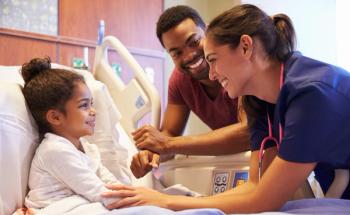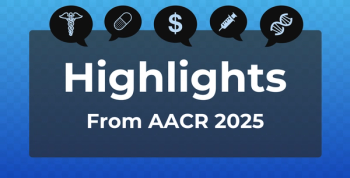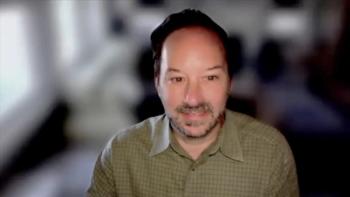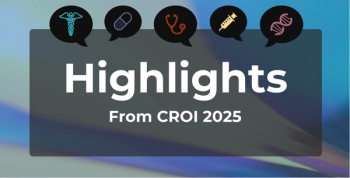
Remote Monitoring May Improve Heart Failure Outcomes: Anitha Vijayan, MD
Key Takeaways
- Remote patient monitoring can improve GDMT adherence for HFrEF by overcoming barriers like transportation and inadequate follow-up.
- Start-up costs for remote monitoring are significant, but self-reported data can aid in medication titration.
Guideline-directed medical therapy used with remote monitoring can potentially reduce hospitalization in patients with heart failure with ejection fraction.
Guideline-directed medical therapy (GDMT) is used to treat patients with
Although prior studies have shown GDMT produces successful outcomes in patients with HFrEF, gaps in implementation are often due to inadequate application in clinical practice. Factors often hindering successful implementation include lack of awareness, concerns of potential adverse events, patient-specific comorbidities or medication intolerance, and insufficient follow-up or monitoring of therapy.1
The American Journal of Managed Care® spoke with Anitha Vijayan, MD, senior medical director of Kidney Service and Nephrology at Intermountain Health, to discuss the practical implications of remote monitoring across multiple specialties. Vijayan moderated a panel at the Institute for Value-Based Medicine event held on October 7 titled “Remote Monitoring and Telehealth to Drive GDMT and Reduce Hospitalizations.”
For many patients, accessing a health care provider can be a challenge, Vijayan said. Patients who are physically unable to commute to their provider often require the aid of loved ones or their support system to sacrifice their time and resources to get them to their appointments. Televisits or remote monitoring are plausible solutions to alleviate transportation burdens on patients, she said.
However, it is not without cost. Vijayan explained that traditional start-up fees for remote monitoring can cost more than $20,000.
“One way to get around it is to, essentially, ask patients to buy a blood pressure monitor and report those readings back to us,” she said. “The other way is, actually, to get funds to provide patients with blood pressure cuffs.”
Either way, using the self-reported patient data, physicians or pharmacists are then able to titrate patient medications appropriately. In this interview, Vijayan discusses how GDMT, when used with remote monitoring, can potentially reduce hospitalization of patients with HFrEF and improve overall health outcomes.
This transcript has been lightly edited.
AJMC: How do you determine which patients are best suited for remote monitoring/telehealth-based GDMT titration? And how do you ensure that more vulnerable or technologically underserved populations are not excluded?
Vijayan: That's a great question, because you could think of telehealth visits as twofold, right? One to help the patients who may not necessarily have transportation or the money to drive in to see us, right, because it's expensive coming in to see a doctor; it's not just the copay or the visit pay, but the mileage and parking. Some hospitals charge for parking, even though Intermountain doesn't. It can be expensive for a patient to come in for an in-person visit, and if that's a challenge, they also need to rely on somebody else who may have to take off from their work. A lot of patients have relied on their spouses or their children to take off work so they can bring them in. Now we're affecting somebody else's time as well.
I would say patients who have significant challenges coming to see us in person will benefit from telehealth visits. In addition, patients who are technologically savvy, right, can also use video visits easily, especially if it's a matter of checking on their blood pressures and reviewing labs. However, the second part of your question is, there's a cost to it too, right? Doing a tele-visit, especially if you're doing it from a phone plan and stuff, there's a charge to that data. It’s challenging for those who are not technologically savvy and for those who may not have the equipment available to do the telehealth visit, and we don't have a setup [either].
Right now, we're not offering any kind of iPads or other technology to patients, but maybe that would be something to consider in the future. [Perhaps] a loan where you can lend certain patients, who have a hard time coming in, an iPad or something like that. But right now, we don't have that in place, but it is a challenge for those who may not be technologically savvy.
AJMC: Remote monitoring generates large volumes of physiological and symptom data. What approaches or safeguards do you use (or foresee) to ensure that data are reliable and actionable in titrating therapies or making clinical decisions?
Vijayan: We just switched to a new electronic medical record (EMR) system. Recently, we switched over to EPIC, and this will make it easier to gather that data and make it actionable. The particular data, from the nephrology standpoint, that we're focusing on is blood pressure monitoring, because I know a cardiologist may have other heart rate monitors and other things that they're tracking. But the biggest actionable ones for us will be blood pressure and probably weight as well, which we have not started with yet, but for blood pressure monitoring.
As the patients report blood pressures, our nurse navigators are the first to review that data, and they will, in turn, discuss it with our physicians or the APS to address appropriate management. Additionally, we do have a pharmacist embedded in one of our clinics, and if it's a matter of titrating up guideline-directed medical therapy, then the pharmacist would be the one to review the blood pressure data and labs and address management of those medications.
AJMC: What evidence have you seen that remote monitoring and telehealth actually reduce hospitalizations or improve outcomes when combined with GDMT protocols? Are there specific metrics or early wins you aim for?
Vijayan: I would say, yes, reducing hospitalization is our target. As I said before, we are relatively early in this process of incorporating remote monitoring into nephrology work, since we just went live on EPIC. Still, our goal is to use this to reduce hospitalization, which is part of the metrics that we're tracking, right, because hospitalizations and chronic kidney disease patients are expensive. We're trying to reduce that by using remote monitoring and other methods as well.
Reference
1. Romero E, Yala S, Sellers-Porter C, et al. Remote monitoring titration clinic to implement guideline-directed therapy for heart failure patients with reduced ejection fraction: a pilot quality-improvement intervention. Front Cardiovasc Med. 2023;(10). doi:10.3389/fcvm.2023.1202615
Newsletter
Stay ahead of policy, cost, and value—subscribe to AJMC for expert insights at the intersection of clinical care and health economics.









































